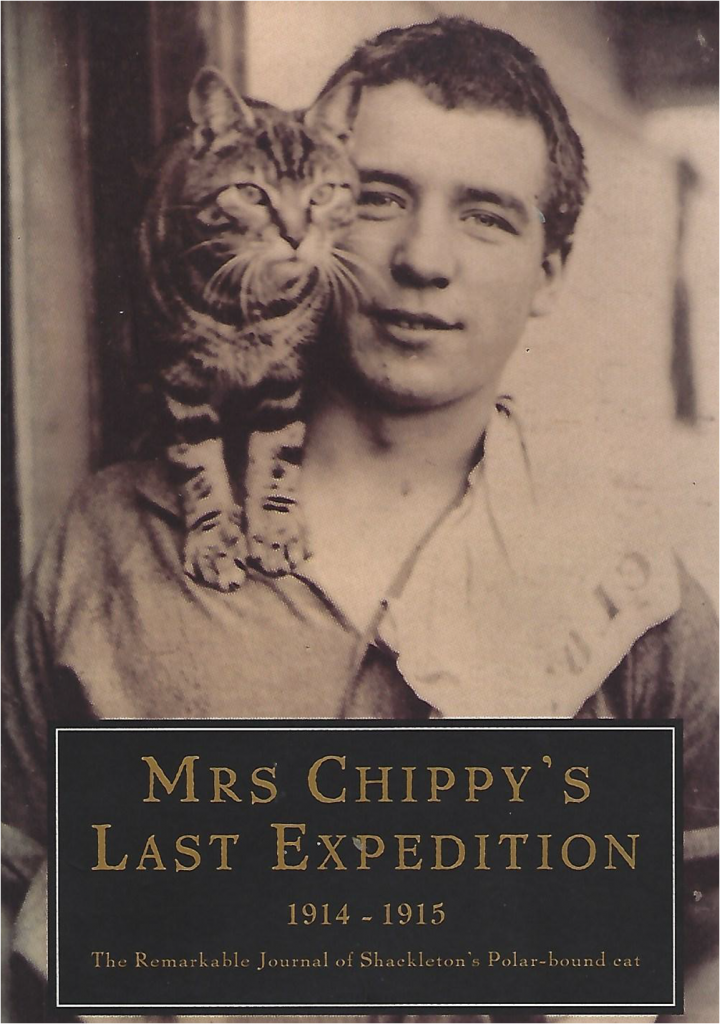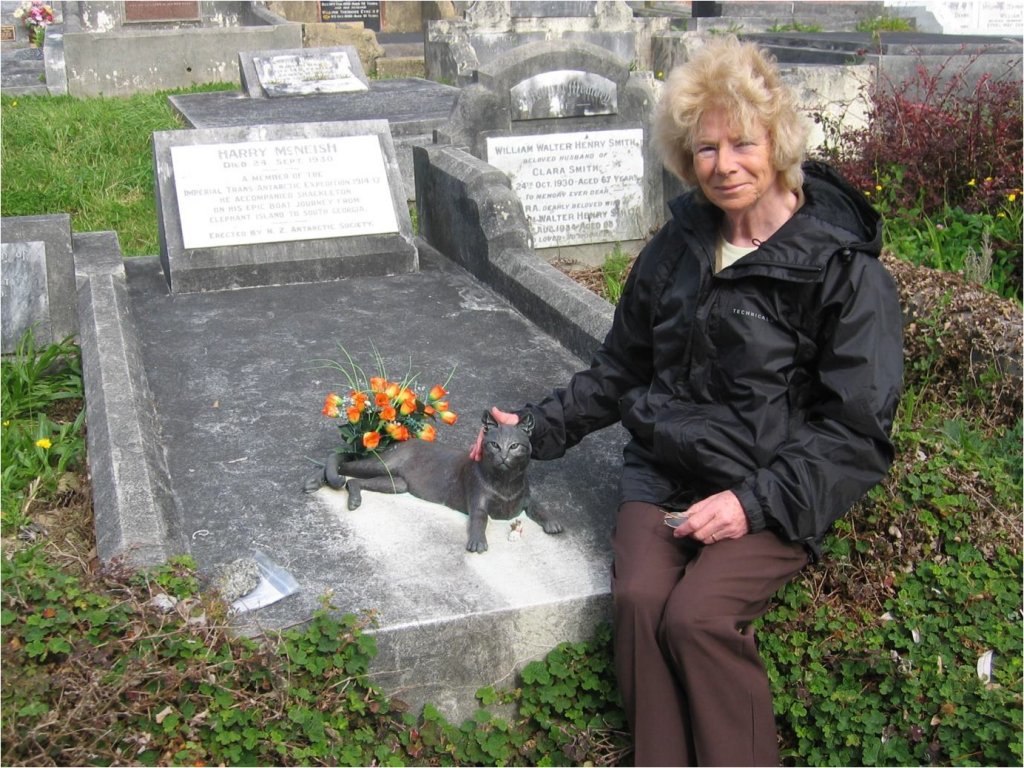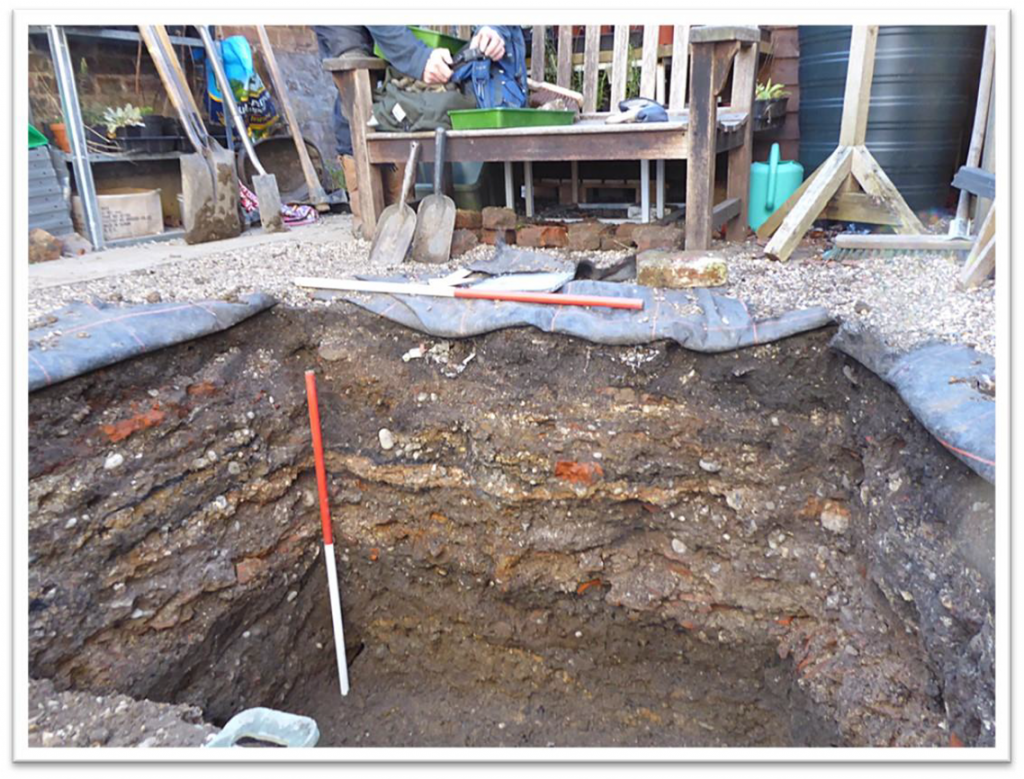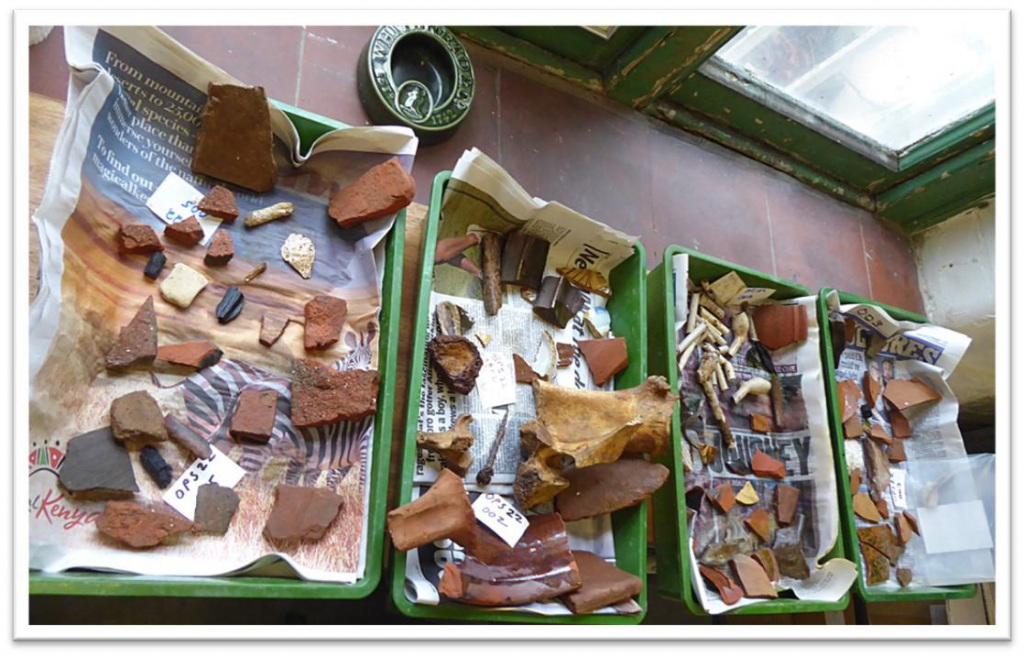
No. 613 April 2022 Edited by Sue Willetts
HADAS DIARY – Forthcoming lectures and events
Due to the COVID-19 pandemic, until further notice lectures will be held online via ZOOM, all starting at 8 pm, although we do hope to get back to face to face lectures soon. As ever, our apologies to those who are unable to see online lectures. We will be sending out an invitation email with instructions about how to join on the day of each talk, so please keep an eye on your inbox.
Tuesday 12 April.
Dr Martin Bates, University of Wales, Trinity St. David. London in the Ice Age: changing environments and human activity.
Dr Bates is engaged in contract and research fields in field geoarchaeology and Palaeolithic archaeology. He has been involved in several major discoveries within the UK including the Dover Bronze Age Boat, the Clactonian Elephant butchery site in Ebbsfleet, the Harnham terminal Lower Palaeolithic site near Salisbury and he discovered the Happisburgh human footprint sin Norfolk. Dr Bates is actively engaged in the investigation of submerged landscapes in the North Sea and Orkney.
Tuesday 10th May
James Wright. The Folklore and archaeology of historic buildings.
Tuesday 14th June
Annual General Meeting with a talk (tba)
Tuesday 11 October
Dr Martin Bridge (UCL) Tree-ring dating and what it tells us about the old Barnet Shop.
Tuesday 8th November
Nick Card. Building the Ness of Brodgar
Archaeology news: Location of the Endurance in the Antarctic Sue Willetts
Many will have seen the news item about this discovery by underwater robots. The wreck of Antarctic explorer Sir Ernest Shackleton’s ship, Endurance, which has not been seen since it was crushed by ice and sank in the Weddell Sea in 1915, has been discovered in remarkable condition. Scientists located and filmed the shipwreck 3km (10,000ft) underwater. “Without any exaggeration this is the finest wooden shipwreck I have ever seen – by far,” said marine archaeologist Mensun Bound, who was on the discovery expedition.
1
Mrs Chippy’s Last Expedition Jim & Jo Nelhams
Mrs Chippy was actually a Tom cat belonging to Harry McNeish. Harry was the cook and carpenter (or chippy) on Shackleton’s expedition.. As such Harry was the man who strengthened to ship’s rowing boat for its epic 1,300 kilometer journey from Elephant Island to South Georgia, which ultimately led to the survival and rescue of every human member of the crew of the Endurance. Sadly, the ship’s cat was the only member of the crew not to survive, having been put down on Shackleton’s orders, an action for which McNeish never forgave him. Shackleton was an old boy of Dulwich College, and the boat, the James Caird, now rests in the College as a permanent celebration of one of their most illustrious alumni.
Mrs Chippy was the first cat ever to take part in an Antarctic expedition. The story is documented in the book, “Mrs Chippy’s Last Expedition”, published by Bloomsbury Paperbacks.
McNeish came from Cathcart near Glasgow, but later emigrated to New Zealand, where he remained until his death. He is buried in Karori Cemetery in Auckland. In 2004, funded by the New Zealand Antarctic Society, a life-sized bronze statue of Mrs Chippy was placed on the grave. During a visit to New Zealand in 2010, Jo and I found our way to the cemetery.
2
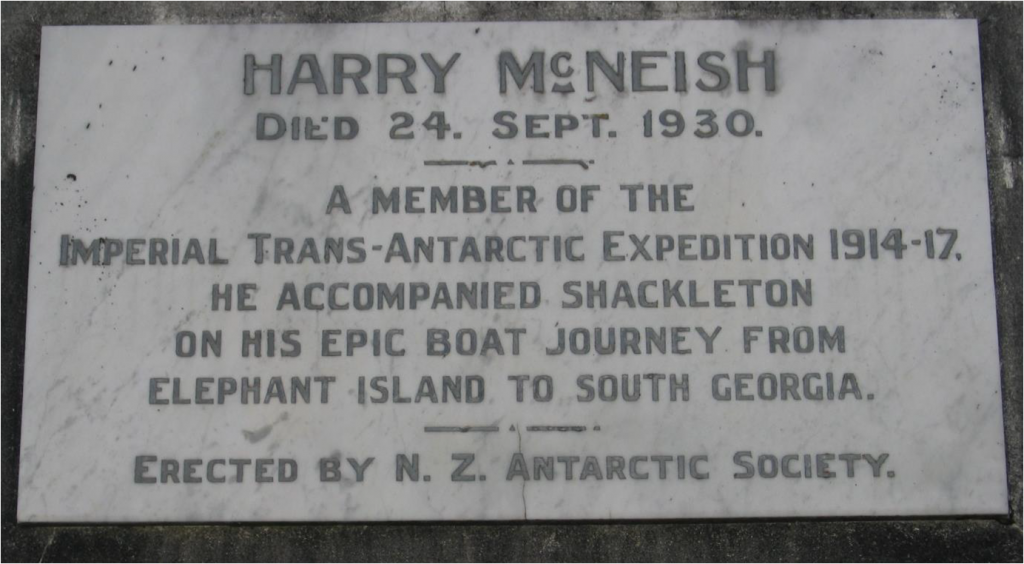
New Zealand with the memorial to Mrs Chippy.
3
HADAS short notice dig in High Street, Barnet Bill Bass
Through the good offices of Michael and Alice Kentish, HADAS were offered the opportunity to dig an exploratory trench in the back garden/yard of their shop ‘Hopscotch’ at 88 High St, Barnet. The shop is directly opposite to the east side of Barnet Parish Church so in an area of possible promising archaeology.
Previous nearby excavations by HADAS and others have recovered evidence for the c12th century beginnings of Chipping Barnet through its post-medieval and later story.
The dig was conducted over the weekend of the 25-27th February in the very tight confines of the backyard of the shop, an initial trench of approx. 1.50m sq. was opened up, finding a dump of Victorian bottles and pottery, a lot of brick and tile was mixed in with this. We then started to recover some post-medieval pottery, slipwares and stonewares, also clay pipe bowls and the like. At this point we had to ‘step in’ the trench to make it safer, at the bottom of this section we started to find medieval pottery and tile. There we had to end it as we had reached our safe working limits.
So we seemed to have found a quite good sequence of finds and can demonstrate the survival of archaeology in these backyard confines near to the High Street.
4
Thanks to the members who took part or visited the site and to Michael and Alice for their hospitality. We are now washing and processing the finds at Avenue House, Finchley. If anyone wishes to take part in this please contact me at (bill_bass@yahoo.com).
A fuller report will appear in a future edition of the Newsletter. Further info: https://barnetsociety.org.uk/archaeologists-turn-up-fragments-of-everyday-life-from-medieval-times-in-barnet
Note from Ed. A very speeded-up clip of the dig entitled “All in a day’s work” was featured several times in the advert breaks at the London and Middlesex Archaeological Society conference on 19th March and received favourable comments. This online event featured London archaeology in the morning and reports on excavations connected with HS2 railway project in the afternoon.
HADAS Long excursion 2022 Jim & Jo Nelhams
We regret to advise that we will not be running a long trip this year. We had originally planned to go to Stoke on Trent in 2020 and had chosen the hotel. A number of places had been checked with some listed for visits. Then along came COVID.
In the December newsletter, we asked members to advise us if they were interested in a trip but less than 20 responded – half the number to make the trip viable. Without your support, revisiting all possible places would not have been worthwhile. We do know that some locations have not re-opened (yet) and some are reluctant to accept groups and Stoke Council announced partial closure of some of their museums.
Added to that, costs, particularly diesel costs for the coach, have risen dramatically.
5
Of course, we are all three years older than we were at Aberavon, and that makes it more difficult to accept responsibility for your safety.
Jo & I have organised trips since the visit to Hereford in 2009, a total of 11 trips over the period. It is sad that we should be finishing long trips this way, but we do not see an alternative.
Thanks to all those who came on any of our trips. The enjoyment comes from the people sharing their time with us.
Marseille Peter Pickering
My son and I recently had a few days in the south of France, and paid visits to some of the museums of Marseille. Massalia was founded early in the sixth century BC, as a colony of Phocaea, a Greek trading and sailing city on the west coast of Asia Minor. It was the Greek colony furthest from the Greek heartland, isolated within the very different civilisation of Gaulish tribes, which were slowly absorbed into the expanding Roman empire. The trading voyages of its mariners were famous – Pytheas came to Britain in search of tin. Julius Caesar conquered Massilia (its Latin name), but for a long time it retained its Greek character.
When the Stock Exchange (bourse) was being rebuilt in the 1960s and 70s a large area of the Hellenistic port was excavated (the first major urban archaeological dig in France), and part of the excavated area has been retained, with a few rather ghostly boats to evoke its past, and a museum of the history of Marseille opened in 1983 and reopened after modernisation in 2013. It is round the back of the rebuilt bourse, and despite its size it is peculiarly difficult to find (or perhaps it was just our obtuseness). Its archaeological displays are large and comprehensive, including the hull of a ship of the 2nd century (claimed to be the best preserved of a vessel of this period in the world), statues of local Gaulish notables seated cross-legged, a number of small shrines with the image of a goddess, and quantities of amphoras. There are also extensive mediaeval and modern displays. The labelling is informative, with quite a bit in English; there were several simulacra of people which we thought were intended to be interactive animated guides, but we did not try to operate them, and we saw no one else doing so – in fact there were very few others in the museum. http://musee-histoire-marseille-voie-historique.fr/
Another museum, much more lively, and indeed trendy, is a very modern building integrated with footbridges (very windy when we were there) into the Fort St-Jean (which dates from the twelfth century) a good restaurant and a fine view of the sea. It is described as a Museum of European and Mediterranean Civilisations, but the main exhibition covers only two epochs – sixteenth/seventeenth centuries and the present day. https://www.mucem.org/en
We also visited the museum ‘Regards de Provence’ which was full of interesting but repetitive pictures of Marseille port over the past two centuries and, fascinating and topical, a restored quarantine station where from the eighteenth century (when a ship from the far east had broken the rules and caused a devastating outbreak of the plague) until the 1960’s immigrants and other visitors by ship had been held until they were shown not to be infected. A video presentation, with English sub-titles, was given in a room where we could see the machines where those who were in quarantine had their clothes disinfected.
https://www.museeregardsdeprovence.com/en
6
Other Societies’ Events Eric Morgan
Please check with the Society or Organisation before setting out in case of any changes or cancellations.
Tuesday 5 April – 1.00 p.m. Society of Antiquaries. Kindred: Neanderthal life, love, death and art. Talk by Dr Rebecca Wragg Sykes. Currently on Zoom. Book at https://tinyurl/23rs44v4 Visit www.sal.org.uk/events for details. Free but donations accepted.
Monday 11 April – 3.00 p.m. Barnet Museum & Local History Society. St. John’s Parish Church, Chipping Barnet, corner Wood St. / High St. Barnet, EN5 4BW. The Queen’s Platinum Jubilee. Talk by Martin Russell, Deputy Lieutenant for London Borough of Barnet. Talks are £2 or free to members
Monday 11 April – 8.00 p.m. Richmond Local History Society. Talk on Zoom. Sculptures at Kew and beyond by Shirley Clark. For further information visit www.richmondhistory.org.uk or phone Sec. Elizabeth Velluet 0208 891 3825 or e-mail rich.hist@yahoo.co.uk Visitors may be charged £4.00
Tuesday 12 April – 6.30 p.m. LAMAS. The Icehouse at Park Crescent West (Just south of Regents Park) From 2015-18, A standing building survey was undertaken to record the near-intact late C18th subterranean icehouse (The earliest known commercially-sized icehouse of its type in England) Designated a scheduled ancient monument, it was infilled with rubble in 1961 which was removed over the course of recent investigation. Talk by Danny Harrison (MOLA) on zoom. Book at www.lamas.org.uk/lectures.html via Eventbrite. Non members charge is £2.00
Tuesday 19 April – 7.45 p.m. St. Albans and Hertfordshire Architectural and Archaeological Society. Archaeology and the Pub. Ross Cook, a buildings archaeologist, looks at exciting discoveries uncovered during the recent conversion of the former Bull Inn in Redbourn into a new supermarket. Lectures start at 7.45pm and are open to members and non-members. The latter pay £5 and payment is made by Eventbrite at registration. https://www.eventbrite.co.uk/cc/sahaas-spring-programme-163419?aff=odclrlmcfto You can log in from about 7.40pm. Each lecture will last about 45 minutes and will be followed by a Q&A session. https://www.stalbanshistory.org/
Thursday 21 April – 8.00 p.m. Historical Association. Hampstead and NW London Branch. Robespierre: The path from Democrat to Terrorist in the French Revolution. Talk by Dr Marisa Linton. Meet at Fellowship House, 136A Willifield Way, NW11 6YD – off Finchley Rd, Temple Fortune. Hopefully also on Zoom. Please e-mail Jeremy Berkoff (Chair) jeremyberkoff@mac.com or phone 07793 229521. There may be voluntary charge of £5.00 Refreshments afterwards
Thursday 21 April – 8.00 p.m. Bexley Archaeological Group. Talk on Zoom. Examining Late Prehistoric equestrian connections between Britain and Ireland by Dr Rena Maguire. For login link visit www.bag.org.uk You may be charged £5.00
Friday 22 April – 7.00 p.m. Enfield Archaeological Society. Talk on zoom. Recent Archaeological investigations by E.A.S. by Dr Martin Dearne (He gave HADAS March 2022 lecture) Preceded by A.G.M. To obtain details and link visit website www.enfarchsoc.org
7
Monday 25 April – 8.00 p.m. Ruislip, Northwood & Eastcote Local History Society. Introduction to Kew Gardens and their history. Talk by Mary Done. Should be held on Zoom. Check website www.RNELHS.org.uk for login link closer to date
Wednesday 27 April – 7.45 p.m. Friern Barnet & District Local History Society website or telephone 020 8368 8314 North Middlesex Golf Club, The Manor House, Friern Barnet Lane, N20 0NL London’s Air ambulance. Talk by Sue Ellis. Visit www.friern-barnethistory.org.uk and click on programme or phone 020 8368 8314 for up-to-date details (David Berguer, Chair) Non-members £2.00 Bar available
Thursday 28 April – 7.30 p.m. Finchley Society, Drawing Room, Avenue (Stephens’) House, 17 East End Rd, N9 3QE. An alternative King’s Cross. Talk by Chris Foster. An illustrated meander through old streets and alleyways, Non-members £2.00 at the door. Refreshments in interval. Also on Zoom, visit www.finchleysociety.org.uk for link. Refreshments in interval.
****************************************************************************************************************
With many thanks to this month’s contributors: Bill Bass, Peter Pickering, Eric Morgan, Jim & Jo Nelhams
****************************************************************************************************************
Hendon and District Archaeological Society
Chairman Don Cooper 59, Potters Road, Barnet, EN5 5HS
(020 8440 4350) e-mail: chairman@hadas.org.uk
Hon. Secretary Janet Mortimer 34 Cloister Road, Childs Hill, London NW2 2NP
(07449 978121) e-mail: secretary@hadas.org.uk
Hon. Treasurer Roger Chapman 50 Summerlee Ave, London N2 9QP
(07855 304488) e-mail: treasurer@hadas.org.uk
Membership Sec. Stephen Brunning, Flat 2 Goodwin Court, 52 Church Hill Road,
East Barnet EN4 8FH1 (020 8440 8421)
e-mail: membership@hadas.org.uk
Web site: www.hadas.org.uk
8

